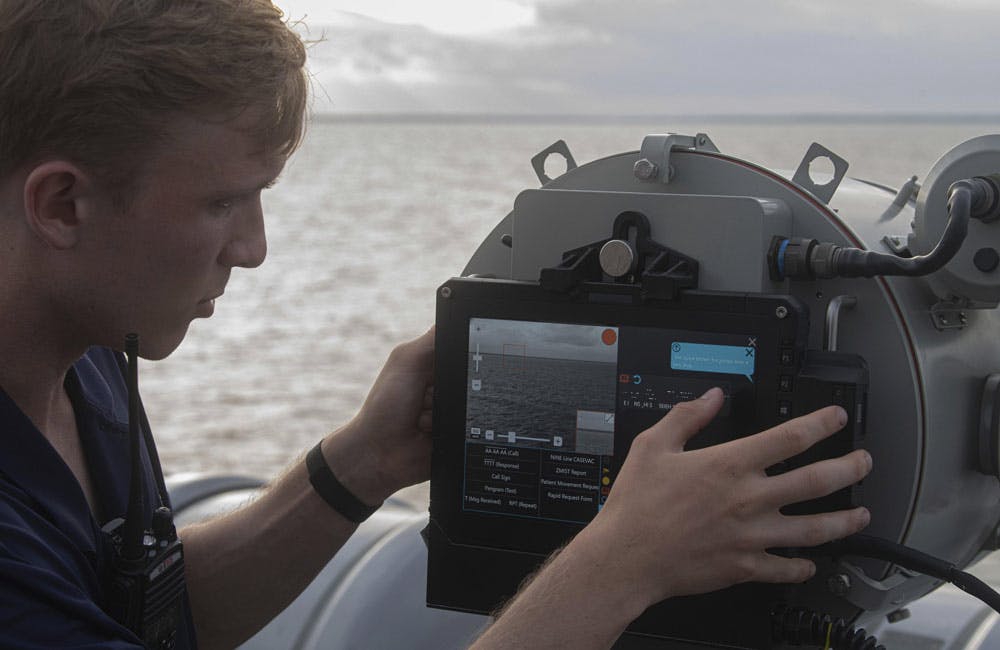USPTO Outlines Future Plans for AI, Innovation
USPTO experts discuss new findings and growth potential across AI and emerging technologies.

The U.S. Patent and Trademark Office is investing in research, development and deployment of artificial intelligence and emerging technologies to discover new process improvements.
To do this, the agency is looking to accelerate the creation of innovative solutions that will drive down to the mission level.
“What we are focused on is bringing innovation to impact,” Kathi Vidal, under secretary of Commerce for Intellectual Property and director of USPTO said during the agency’s inaugural AI and Emerging Technologies Partnership Series Wednesday. “We want to incentivize innovation, especially in key areas like AI and emerging technologies.”
USPTO is currently looking to bolster its infrastructure to enable innovation. Vidal noted that the agency create new rules that minimize barriers and mitigate pitfalls that may impede faster development and deployment of AI and other emerging technologies.
The agency has also deployed new AI tools that USPTO’s examiners can use to improve the quality of patent and trademark application examinations.
Earlier this year, USPTO formally launched an AI system to conduct extensive searches for prior art, resulting in higher quality patents that form the basis of new products, new companies and new industries. For trademarks, USPTO is developing an AI search and comparison tool for examining attorneys, and for customers, the agency created an AI-based virtual assistant deployed on its website to help locate otherwise modified information quickly and easily.
“Bottom line, we need to get this right, and we need to partner with [industry] on that,” Vidal said. “We need to make sure we’re setting laws, policies and practices that benefit the U.S. and the world.”
USPTO built a machine learning system that sorts through patent documents, texts, citations, CPC symbols and other information to better identify certain technologies. The agency developed a system to identify AI contained in USPTO patent documents. From this system, USPTO released the AI patent dataset in June 2021.
“That data set is publicly available … that’s kind of the backbone of our effort here,” explained Nicholas Pairolero, a USPTO economist. “Then, we released the ‘Inventing AI’ report that traced the massive diffusion of AI across companies across US geography.”
The agency’s 2020 “Inventing AI” report noted that from 2002 to 2018, annual AI patent applications increased by more than 100%, rising from 30,000 to more than 60,000 annually, Mary Critharis, USPTO’s chief policy officer and director for International Affairs explained. Over the same period, the share of all patent applications that contain AI grew from 9% to nearly 16%.
“What we’ve been observing is that there is an increasing importance of AI in invention and innovation in all areas,” Vidal said. “We also found that there’s been a broad diffusion of the use of AI across technologies, inventors, organizations and geography.”
For instance, Maine and South Carolina are leaders in applying AI to digital data processing for businesses and ventures; Oregon in developing AI fitness training programs and equipment; Montana in analyzing the chemical and physical properties of materials; and Wisconsin in the development of AI and medical instruments, processes for diagnosis, surgery and identification.
“We must work together so that we can more rapidly advance our common agenda and accelerate the deployment of these critical technologies throughout industry and society,” Vidal said. “We play an important role in creating a hopeful future for people who currently believe that technology could be causing more harm than good. AI is an essential bridge for that more optimistic future.”
This is a carousel with manually rotating slides. Use Next and Previous buttons to navigate or jump to a slide with the slide dots
-

Energy Researchers Aim For Holistic Approach to AI Issues
A new center at the Oak Ridge National Laboratory is looking at under-researched areas of AI to better understand how to secure it.
2m read -

How Agencies are Upskilling the Workforce in AI
Federal officials are putting in place new training and education methods to ensure its overall workforce understands the technology.
3m read -

Sea-Air-Space: Coast Guard Prioritizes Agility in the Face of Technological Change
Adm. Linda Fagan says the modern Coast Guard is to adjusting to the speed of technology.
10m watch -

AI Needs Strong Structures to Develop User Trust, Leaders Say
AI’s potential can only truly be met when guardrails and culture are in place, according to defense officials.
5m read








